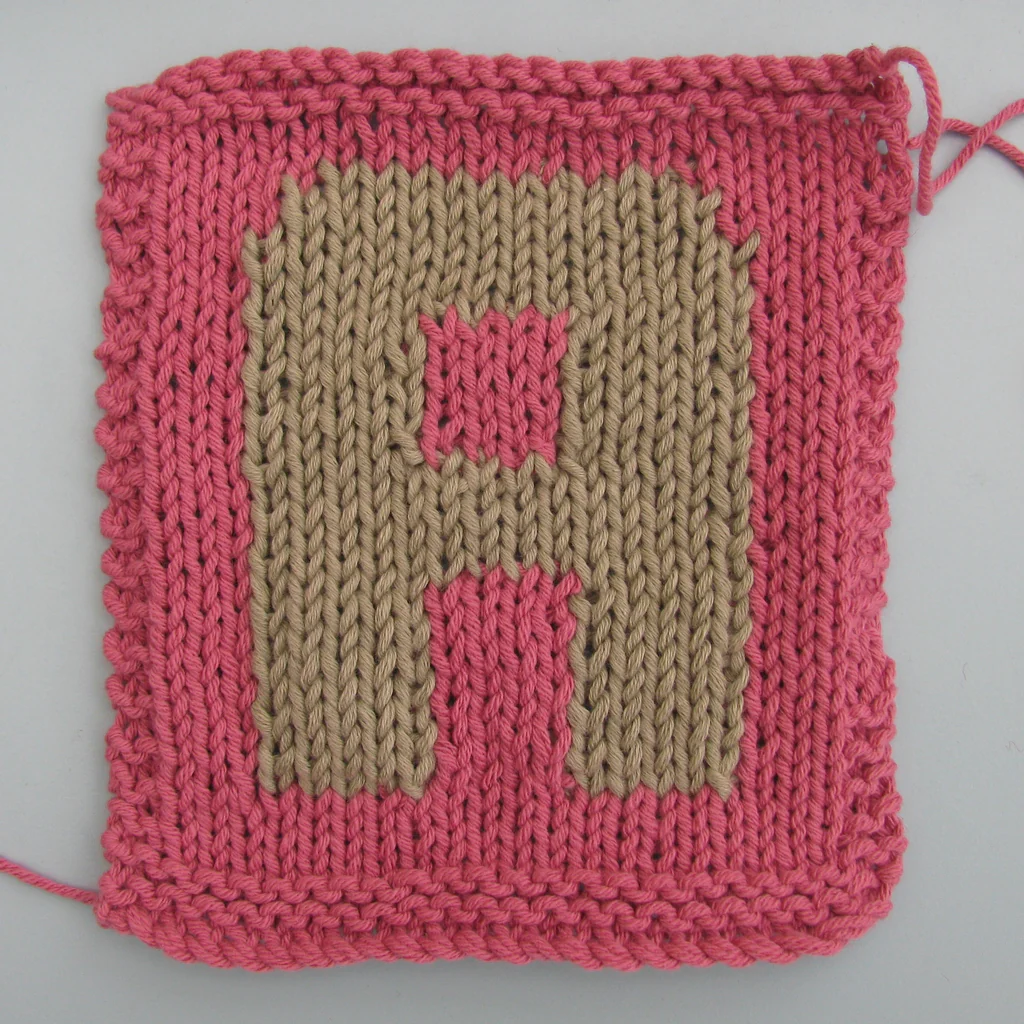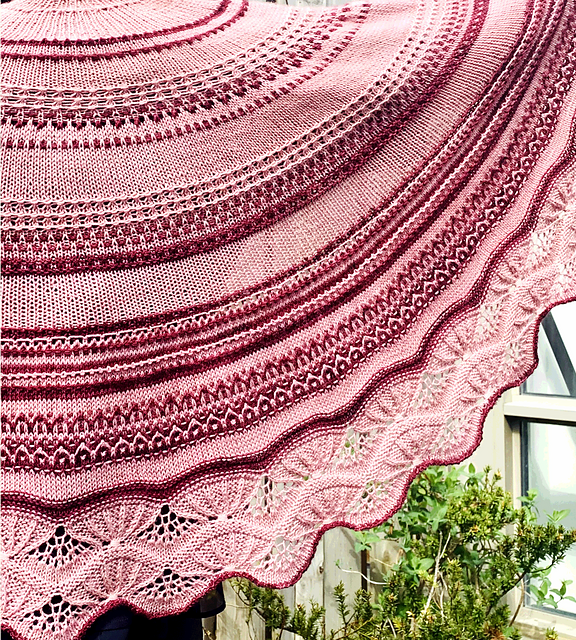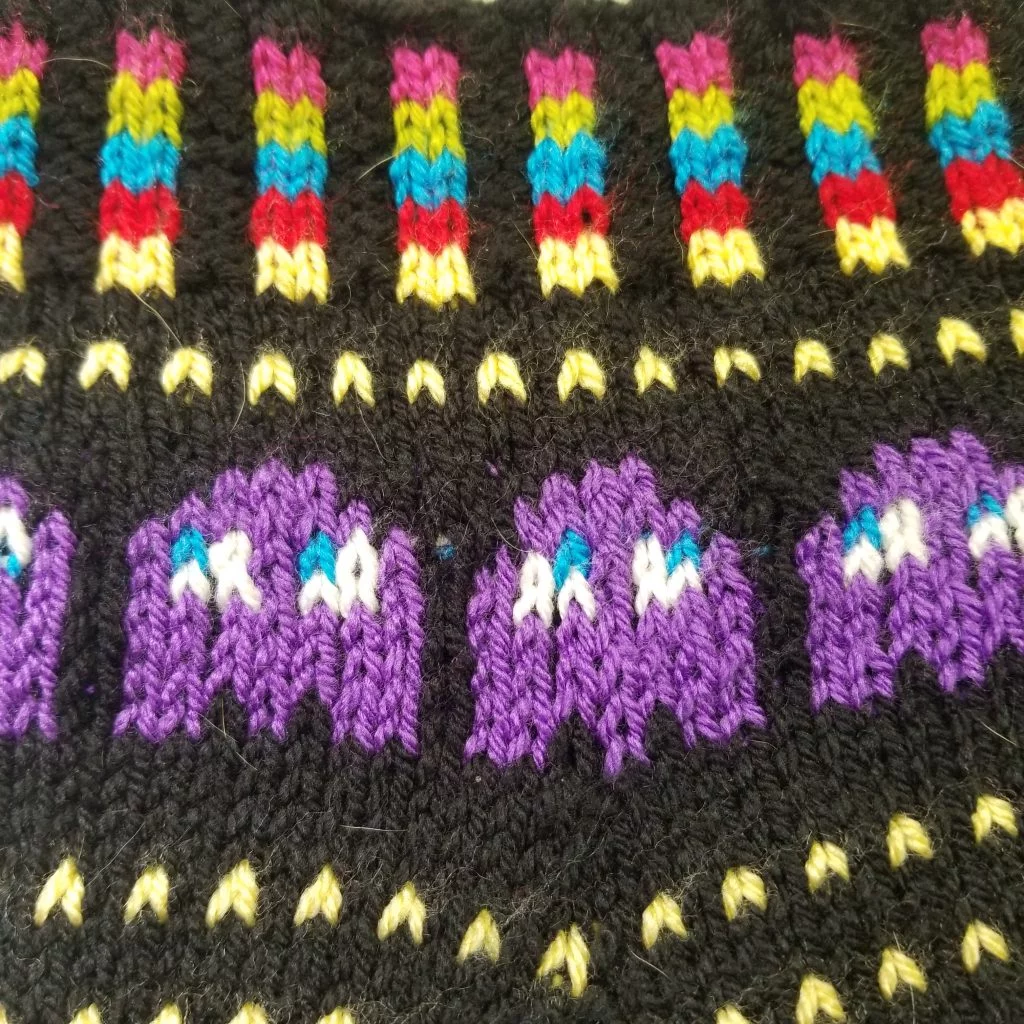Colorwork techniques in knitting offer endless possibilities for creating vibrant designs. But, it’s important to note that not all colorwork techniques are suitable for every project. Each technique has its own advantages, best suited for specific projects. This article explores three styles of colorwork, each one best suited for different projects. By exploring the nuances of each technique, you’ll gain the be able to choose the most suitable method for your specific project.
Intarsia Knitting
Intarsia knitting is a technique that allows you to add large, solid blocks of color to your projects. Unlike other colorwork techniques, intarsia doesn’t involve carrying yarn across the back of the work. This allows for more precise color placement and eliminating the need to manage long floats. Instead, it uses separate bobbins or balls of yarn for each distinct color area or shape.

Projects that require sharp, clean lines benefit the most from intarsia. Intarsia is best for projects which don’t use too many colors, as you’ll be managing a ball of yarn for each color you use. This is why intarsia is less suitable for projects with continuous, repeating patterns or designs. These kinds of projects require a high number of color changes,
While intarsia is a fantastic technique, it does have its drawbacks. Working with multiple balls of yarn can lead to tangled strands and an increased risk of yarn wastage. Lastly, maintaining tension can be challenging, resulting in uneven stitches. Ensure that you twist the yarns at color changes and monitor your tension throughout the project.
Mosaic Knitting
Mosaic knitting allows you to incorporate color into your knitting while working only with one color per row. This technique involves slipping stitches to create the illusion of intricate color patterns. Simplicity and versatility is what mosaic knitting is best at. This makes it accessible to knitters of varying skill levels.

One of the main advantages of mosaic knitting is in its efficiency. Because your working with one color at a time, you’re only ever managing one ball of yarn at a time. This makes Mosaic knitting perfect for projects that feature detailed designs. Compare this with intarsia, where you can only work with a single color at a time, mosaic is the optimal choice. Since the project is only worked on one side of the fabric, you could also create reversible fabrics.
But, Mosaic knitting is not the most suitable technique for projects requiring intricate designs. This is due to the patterns produced in mosaic knitting, which are often bold and graphic, and may not be suitable for all projects. Additionally, keeping track of stitch patterns and color changes can be challenging. Consider using stitch markers to help you maintain the correct stitch pattern and track color changes in the pattern.
Fair-Isle Knitting
Fair-isle knitting, also known as stranded knitting, showcases the art of incorporating multiple colors within a row to create intricate, harmonious patterns. Unlike intarsia and mosaic knitting, fair-isle involves carrying the yarn across the back of the work, creating floats. This technique allows for smooth color transitions and offers limitless design possibilities.

The advantages of fair-isle knitting are remarkable. Fair-isle excels in projects that call for intricate, multicolor patterns. such as traditional Nordic sweaters, hats, and mittens. This is why fair-isle lends itself well to projects where you want to achieve a balanced color distribution and smooth fabric appearance. Additionally, fair-isle enables the knitter to play with shading, blending, and creating gradients.
Although, fair-isle can be more time-consuming and requires careful attention to tension. Floats that are too loose can cause the fabric to pucker, while tight floats can restrict the fabric’s stretch and drape. This means that practice and patience are essential in achieving even tension and avoiding visible floats on the right side of your work.
Remember, after completing your project, blocking can play a crucial role in enhancing the final appearance. Using a blocking tool can even out stitches, relax the fabric, and reveal the true beauty of your colorwork patterns. So, don’t forget to include this essential step in your knitting process to achieve the best results.
By mastering all three colorwork techniques you’ll expand your skill-set, and gain the ability to tackle a wide range of projects. Each technique has its unique advantages and drawbacks, making it essential to choose the right one for your project. Mastering more than one style of colorwork allows you to overcome the limitations of relying on just one technique. Embrace the art of colorwork and enjoy the endless possibilities it brings to you, and your knitting journey.
